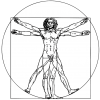Maybe one factor that is effecting the variability of COVID case numbers from region to region is the "Super-spreader" phenomenon combined with randomness and luck. If a small % of COVID infected people shed much more virus, that can translate to disproportionately higher infection rates in the region where that individual lives. Super-spreaders have not characterized with COVID as far as I am aware but the phenomenon has been studied in SARS and other diseases. From One of the papers below:
"Given their high propensity to spread infection, super-spreaders should be able to shed higher levels of pathogen and/or for a longer period of time after infection. This would increase the probability that the pathogen contacts and subsequently infects a naive host."
Cell Host Microbe. 2015 Oct 14; 18(4): 398–401.
Published online 2015 Oct 14. doi: 10.1016/j.chom.2015.09.013
PMCID: PMC7128246
PMID: 26468744
MERS, SARS, and Ebola: The Role of Super-Spreaders in Infectious Disease
Gary Wong,1,2 Wenjun Liu,1,2 Yingxia Liu,3 Boping Zhou,3 Yuhai Bi,1,2,3,∗ and George F. Gao1,2,3,4,∗∗
Author information Copyright and License information Disclaimer
Abstract
Super-spreading occurs when a single patient infects a disproportionate number of contacts. The 2015 MERS-CoV, 2003 SARS-CoV, and to a lesser extent 2014–15 Ebola virus outbreaks were driven by super-spreaders. We summarize documented super-spreading in these outbreaks, explore contributing factors, and suggest studies to better understand super-spreading.
Int J Infect Dis
. 2011 Aug;15(8):e510-3. doi: 10.1016/j.ijid.2010.06.020. Epub 2011 Jul 6.
Super-spreaders in Infectious Diseases
Richard A Stein 1
Affiliations collapse
Affiliation
1Department of Molecular Biology, Princeton University, One Washington Road, LTL320, Princeton, NJ 08544, USA. ras2@princeton.edu
PMID: 21737332 PMCID: PMC7110524 DOI: 10.1016/j.ijid.2010.06.020
Free PMC article
Abstract
Early studies that explored host-pathogen interactions assumed that infected individuals within a population have equal chances of transmitting the infection to others. Subsequently, in what became known as the 20/80 rule, a small percentage of individuals within any population was observed to control most transmission events. This empirical rule was shown to govern inter-individual transmission dynamics for many pathogens in several species, and individuals who infect disproportionately more secondary contacts, as compared to most others, became known as super-spreaders. Studies conducted in the wake of the severe acute respiratory syndrome (SARS) pandemic revealed that, in the absence of super-spreading events, most individuals infect few, if any, secondary contacts. The analysis of SARS transmission, and reports from other outbreaks, unveil a complex scenario in which super-spreading events are shaped by multiple factors, including co-infection with another pathogen, immune suppression, changes in airflow dynamics, delayed hospital admission, misdiagnosis, and inter-hospital transfers. Predicting and identifying super-spreaders open significant medical and public health challenges, and represent important facets of infectious disease management and pandemic preparedness plans.
Copyright © 2011. Published by Elsevier Ltd.
![]()






















































